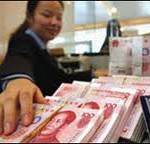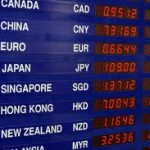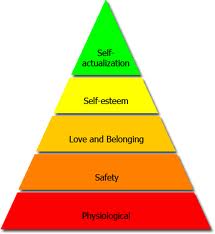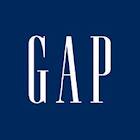
Employee training and development. The following purposes of training and development as proposed by Beardwell et al (2004): a) Maximising productivity and service provision for the company b) Developing the adaptability for the workforce c) Developing an organisation as a whole d) Increasing job satisfaction, motivation and morale of workforce e) Improving standards and safety at work f) Promoting the Better utilisation of other resources g) Standardisation of work practices and procedures Wood (2009) divides trainings methods into two categories: traditional training methods, and electronic training methods. Traditional training methods include lectures, on-the-job training, apprenticeship training, offside training, programmed learning, informal learning, job instruction training, and training stimulated by audiovisual tools. As a traditional training method, on-the-job training includes job rotation, coaching, and action learning, whereas the main elements of off-the-job training (offside training) are case-study, games, external seminars, Internet-based seminars and conferences, university-related programs, role-playing, behavioural modelling, Internet educational portals, and behavioural modelling. The main elements of electronic training are computer-based training, video-conferencing, electronic performance support systems, tele-training, learning portals and others. Paauwe (2004) specifies task analysis to be a detailed study of the job to be undertaken in order to identify skills required for the job. Performance analysis, on the other hand, as Shermon (2004) informs, examine individual and collective performances within organisations in order to identify deficiencies, then training and development programs can be devised in order to eliminate these performance deficiencies. Moreover, Behaviour Modelling has also been identified as an important element of training and development programs and Dessler (1984) informs that behaviour modelling includes three following components: a) Showing trainees the right (or “model”) method of performing a task b) Giving opportunities to trainees to perform in this way c) Giving feedback on the trainees’ performance. Strengths of behaviour modelling as an element of training and development scheme is…

According to Goodhart and Xu (1996, p.24) China had a dual exchange rate system: official artificially high value of RMB, and its lower value in the swap market, and these two markets were unified on January 1, 1994. The analysis by Goldstein (2003) regarding China’s currency regime resulted in five conclusions: Chinese RMB is under-valued within 15-25 percent range. This is resulted by China maintaining controls on capital outflows, running surpluses on overall current and capital accounts in its balance of payments and accumulating international reserves in large amounts. The revaluation of RMB will benefit China and the global economy, otherwise net capital inflows and the large accumulation of international reserves will continue. Adopting a flexible exchange rate and opening its capital market will benefit China, but the economy is not ready for this. China should be persuaded to change its exchange rate policy, and trade measures should be imposed against China’s exports by United States. The effect of medium-size revaluation of RMB within external accounts of US must not be exaggerated. Wu (2006, p.3) argues that before revaluation of RMB 2 per cent in 2005 The People Bank of China had four options to consider as its short-term policy options: Option 1: Increasing the supply of money without revaluing the RMB. This option would have contradicted the macroeconomic objectives of The People’s Bank of China Option 2: Waiting for the tightening of the Federal Reserve without revaluing the RMB. Option 3: Aiming to lower revaluation expectations tightening macroeconomic environment, without revaluing RMB. Option 4: Revaluing the RMB Marsh and Diaz (2008, pp.2-4) suggest following forecast methods to forecast the exchange rate of a currency for a future period: Technical forecast method. This method involves analysing relevant historical data with the aim of forecasting…
By John Dudovskiy
Category: Economics

A vast amount of literature reviewed recognize following factors as determinants of the strengths of currency exchange rate: Inflation If the inflation rate is low in a country the value of its currency and its purchasing power towards other currencies rises, meaning its currency becomes stronger. Alternatively, countries with high inflation rate experience their currency depreciating against the currency of countries they trade with. The relationship between inflation and the exchange rate is that fixed interest regime can be practiced by countries with the aim of controlling the inflation rate. Initially it was done on the basis of Bretton Woods agreement before it was annulled in early 1970’s, which allowed other countries to fix their currencies against US dollars. Although fixed interest rate regime does help governments to control their inflation it has negative sides as well in the forms of vulnerability to the speculation and inability of undertaking domestic monetary policy. Interest rates Interest rates and exchange rates are correlated. Higher interest rates cause the exchange rates to increase, because higher interest rates would generate more profit for lenders, at the same time, attracting foreign capital. Conversely, if interest rate in a country is lower, exchange rates tend to be lower as well. Speculation According to Economicshelp (online, 2010), a fixed exchange rate can be a victim of speculation if the following three conditions apply: The currency is at the wrong market value .The Government doesn’t have sufficient reserves to protect the currency. People have no Confidence in the government intervention. Relative strength of other currencies For obvious reasons the relative strength of other currencies are going to affect the exchange rate of a currency of a country. If the strength of any other country currency increases for various range of reasons the exchange rate of…
By John Dudovskiy
Category: Economics

Recruitment and selection of new team members need to be undertaken with the primary aim that “the required numbers of employees with required talent are available when needed” (Bratton and Gold, 2001, p.13), in our case the required number of employees are seven team members with special characteristics and talents specified as above. It is important to have a clear understanding about the differences between recruitment and selection. The primary aim of recruitment is searching for and obtaining potential job candidates in sufficient numbers and quality in order for the organization to be able to select the most appropriate people to satisfy its job needs. (Dowling and Schuler, 1990).Selection, on the other hand, involves selecting candidates among recruited pool of candidates in order to hire for the job. (Hackett, 1991) The primary aim of recruitment is considered to be “to obtain at minimum cost the number and quality of employees required to satisfy the human resource needs of the company” (Armstrong, 2001, p.385) In order to employ the members of the team for the roles specified above the following recruitment strategy is going to be followed as proposed by Beardwell et al (2004): Firstly, each individual vacancy within the team, and their roles and responsibilities are going to be specified. Secondly, all available recruitment methods are going to be critically analysed in order to identify the most suitable ones taking into account the specifications and objectives of the team. Thirdly, recruitment advertisements are going to be undertaken in accordance with the chosen specific recruitment method(s). Fourthly, employment documentations are going to be dealt with as regards to each person recruited. Fifthly, recruitment monitoring and evaluation is going to take place taking advantage of previous experiences regarding this matter. Sixthly, recruited candidates are going to be shortlisted in order to proceed…
By John Dudovskiy
Category: HRM

Abraham Maslow’s Hierarchy of Needs. The nature of initial studies on motivation can be summarised in the idea that “early and modern approaches to motivation are based on the premise that increasing the amount of time and effort that an individual devotes to a task (i.e. task motivation) will result in higher levels of individual performance and increased productivity for the organisation” (Landy and Conte, 2010, p.368). Arguably the most prominent author on the topic of motivation is Abraham Maslow. Maslow states (1943, p.372) that employees have five levels of needs: 1. The Physiological needs. This is the basic needs for living, which includes oxygen water, protein, salt, sugar, calcium, and other minerals and vitamins. They are also known as the “Biological necessities”. They also include the needs to be active, to rest, and to sleep. These needs are the strongest because a person needs to have the factors above in order to survive. In business environment it means good payment, and good environment for working. 2. The safety and security needs. When physiological needs are reached, the second need comes into place, which for employees means finding the safe circumstances, stability, and protection. 3. The belonging needs. When the both satisfactions are reached, belonging needs layer would arise. Employees might begin to feel the needs of friendships, affectionate relationships in general, or even a sense of community. 4. The esteem needs. Maslow has divided esteem needs into two parts: lower and higher self-esteem needs. The lower one is the need for respects for others, whereas the higher one requires self-respect, which includes the sense of confidence, achievement, independence, and freedom. 5. Self-actualization needs. This is the level, when employees satisfy all their needs, including the four needs above. In business sense it means the opportunities for developing new skills, scope to meet challenges and room to perform…

Customer perceptions are needed to be met and exceeded. It requires from companies to study the buyer behaviour of their existing and potential customers and to devise programs and initiatives to offer superior customer service. According to Parasuraman et al (1991, p.42), customer services expectations consist of two levels: desired and adequate. Desired level of expectations is the level of service a customer wanted to be performed, while the adequate level of expectation is the “acceptable” level of service by the customer. A service quality model, highlighting the main requirements for delivering high quality service which identifies five gaps as causes for unsuccessful service delivery has been formulated by Parasuraman et al (1985, pp.41-50): Gap between expectation of client and perception of management. In order to be able to exceed customer expectations, and in this way to insure customer satisfaction service company management has to have a clear and accurate perception about customer expectations. A lack of such knowledge creates a gap that can be one of the main reasons for service customers not being satisfied. Gap between perception of management and service quality specification. Even if management accurately perceive customer expectations there are still chances of customer dissatisfaction that can be caused by the gap in planning quality of the service according to customer expectations Gap between specification of quality and the delivery of service. Another potential area for customer dissatisfaction relates to the failure of efficiently specified quality service due to various reasons, including incompetent workforce, and inefficient working conditions. The gap between the delivery of service and external communications. In cases where service company employees have relevant skills and willingness to offer efficiently specified quality service, still customers may be left unsatisfied due to external factors Gap between perceived and expected service. Lastly, one of the common causes for customer dissatisfaction in service sector…
By John Dudovskiy
Category: Customer Services

Kotler and Keller (2006, p.144) define satisfaction as a person’s feeling of pleasure or disappointment which resulted from comparing a product’s perceived performance or outcome against his/ her expectations. Customer perceived value has been defined as “the difference between the perspective customer’s evaluation of all the benefits and all the costs of an offering and the perceived alternatives” (Kotler and Keller, 2006, p.141) Conceptualised service encounter satisfaction model proposed by Walker (1995, pp. 8-9) is divided into three disconfirmation stages: Evaluation stage. In that stage the peripheral service is encountered prior to the core service being consumed. Core service is more anticipated by the consumer. After core service delivery interaction is undertaken in the final stage. The influence of several complex and multiple factors to the customer tolerance zone is noted by Zeithaml et al (1993, p.2). Eleven factors affecting both desired and adequate service levels are described by Zeitheml et al (1993, pp.3-11) as following: Desired service influencing factors: 1. Enduring service intensifiers Derived expectations Personal service philosophies 2. Personal needs 3. Explicit service promises Advertising Personal selling Contracts Other communications 4. Implicit service promises: Tangibles Price 5. Word of mouth: Personal Expert (Consumer reports, publicity, consultants, surrogates) 6. Past experience Adequate service influencing factors: 7. Transitory service intensifiers Emergencies Service problems 8. Perceived service alternatives 9. Self-perceived service role 10. Situational factors: Bad weather Catastrophe Random over-demand 11. Predicted service References Hutchinson, TP, 2009, “The customer experience when using public transport: a review”, Proceedings of the ICE – Municipal Engineer Kotler, P & Keller, K, 2006, “Marketing Management”, twelfth edition, Prentice-Hall McManus, J & Miles, D, 1993, “An underground journey: Managing Service Quality”, MCB UP Ltd Miller, M, 1995, “Improving customer service and satisfaction at London Underground”, Managing Service Quality, Vol.5, Issue:1 Walker, JL, 1995, “Service Encounter Satisfaction: Conceptualized”, Journal…
By John Dudovskiy
Category: Customer Services

Gap Inc. is a San Francisco based American retailer which sells clothing and accessories. The company was founded in 1969 by Donald and Dorris Fisher. The aim of the company is to help people to express their personal style throughout their life. The company comprises five brands: Gap, Banana Republic, Old Navy, Piperlime and Athleta. The company has 3465 stores worldwide with spores in Canada, France, Ireland, Japan, UK and US owned by the company and stores in other companies are operated by franchisers. Advertising Print and broadcast ads. Gap uses print and broadcast ads intensively both in UK and USA placing advertisements in newspapers and broadcasting its ads in some TV channels in both continents. Along with traditional print and broadcast advertising, sometimes original marketing campaigns are launched, which proved to be memorable and highly efficient in numerous occasions. For instance, Gap launched a print and television advertising campaign, “Favourites” in 2005 with the participation of acclaimed musicians, including Brandon Boyd, Alanis Morisette, Liz Phair, Joss Stone, Keith Urban and others, where each musician performed an original remake of their favourite song wearing their favourite Gap jeans. Packaging outer. The outer packaging for the products of the company is being used as efficient advertising medium by Gap with the eye-catching company logo displayed in large font in it. Billboards. Being one of the most efficient advertising tools, billboards are used by Gap Inc. both in UK and USA. However it is more intensively used in US cities than in UK. Point-of-purchase displays. This advertising tool refers to products being displayed within the point of purchase area in a way that it is convenient to add them to their shopping basket for the people who are already paying for other items. These are usually items that are small in…

Organisational Linkages in Pepsi According to Malloch (2004) honest leadership was the distinctive trait of CEO of Pepsi that was especially well expressed in Steve Reinemund. The secret of Reinmund’s leadership, according to the author, was his ability to recognise the personal aspirations of his employees and linking these aspirations with organisational objectives. Honesty is considered to be one of the leadership traits that can be adopted by other organisations as a result of organisational linkages with them “Linkage analysis calls attention to ways of translating local gains into broader organisational benefits” (Goodman and Rousseau, 2004, p.3). Organisational linkage can be undertaken by linking effective leadership practices within Pepsi into other companies within various industries. For, instance leadership development initiatives that proved to be highly successful for Pepsi can be implemented by other companies as well, in order to achieve similar results. Collins (2010) mentions intensive rivalry between Pepsi and Coca Cola when analysing the leadership style in Pepsi and states that Coca Cola Company have to spend enormous amount of financial resources in their attempts to stay ahead in competition, whereas in Pepsi effective leadership style often results in gaining competitive edge for the company in many aspects with less financial resources spent. This example is a clear illustration of the importance of effective leadership. Efficient leadership not only has intangible positive impacts within organisations such as motivated employees and energised environment, but also has a direct positive impact on organisations in terms of financial gains which can be seen from the case of Pepsi. Explaining the reasons of efficiency Pepsi medium and strategic level managers operate in Cummings and Worley (2008) argue that Pepsi web-based manager development programs such as MyDevelopmentNet and MyCareerConnection play important role. These and similar programs can also be adopted by many businesses, as…

Orange PEST Analysis Political, economical, social, and technological factors effecting Orange are summarised on the table below, followed by a detailed explanation of each of them: Political Stronger consumer rights within Europe Roaming regulation EU regulatory framework for communications industry Strategic collaborations Economical Fluctuations of GDP exchange rate Global economic crisis of 2007-2010 Inflation France – biggest contributor to the revenue Social ‘Green’ issues Ageing population Changing work patterns Technological Technological innovations 3G generation Emergence of alternative technology 1 Political Factors A) Stronger Consumer Rights Within Europe Stronger consumer rights within Europe compared to most of the other parts of the world can be considered to be the most important political factor for Orange due to the fact that the largest number of company’s client base is situated in Europe. This fact makes it compulsory for Orange to follow all the rules and regulations in any European country it operates, including rules and regulations concerning the rights of consumers. B) Roaming Regulation. EU Roaming Regulation proposed by European Commission in 2006 aims to reduce charges for mobile phones usage abroad by 70% from June 2007 (Saplista, 2008). The implications of the current regulation for Orange are direct, due to the fact that the company obtains a specific percentage of its revenues through Europeans using their mobile phones abroad. C) EU Regulatory Framework for the Communications Sector. Most of the European Union member states have implemented European Union Regulatory Framework for communications sector adopted in 2002 (Dimireva, 2010). The aim of the framework is to encourage the competition in telecommunications sector, and Orange is one of the main players in this market, therefore the framework has direct implications for Orange D) Strategic Collaborations Orange announced a new everything everywhere initiative in 2009, according to which company was…
